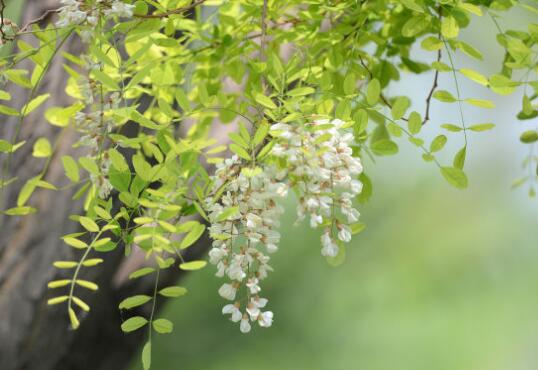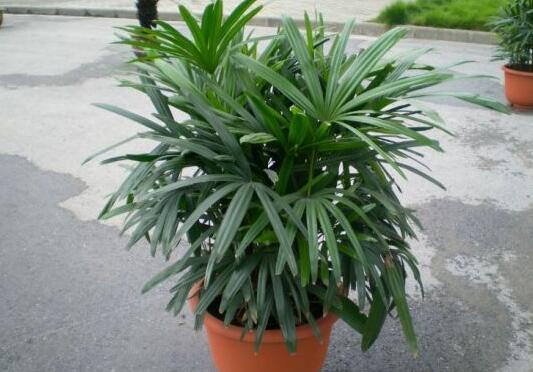How to propagate, sowing and propagation method / cuttage propagation of Clematis paniculata
After being raised for 2-3 years, the lotus will flourish and crawl all over the brackets and flowerpots. At this time, flower friends need to consider its reproduction. As a plant of the order Rosa subclass and Niu Niu, how can it reproduce? The answer is cutting and sowing. Let's learn more about the sowing method and cutting method of Clematis paniculata.
How to reproduce Clematis paniculata

From the planting experience of flower friends, we can see that the propagation method of Clematis paniculata mainly includes cutting and sowing, in which cutting mainly uses tender stems as cuttings, while sowing needs to choose a good time and seeds. What is the specific operation of the two methods? Let's take a look.
Sowing and propagation of alternanthera philoxeroides
1. When will the lotus be sown?
There are generally two stages in the sowing time, namely, spring sowing from March to June and autumn sowing from August to September. If the temperature can be controlled between 18 and 20 degrees, then you can sow at any time, but for most flower lovers, it is best to choose spring sowing or autumn sowing.
2. Sowing method of Clematis paniculata
⑴, how to reproduce when sowing? First of all, you need to choose good seeds, generally with relatively full and healthy seeds, and choose seeds according to the varieties you want to plant, because there are many varieties of Clematis, and each kind of ornamental is slightly different.
⑵, plant the selected seeds on the sand bed on demand, then cover the soil with a thickness of about 1 cm, and then need to water thoroughly and keep the temperature between 18 and 20 degrees, which is conducive to its rapid germination and rooting.
⑶, in the subsequent maintenance, pay attention to keep the soil moist, and then ensure a certain amount of light, generally about 1 week can sprout, when it grows 2-3 true leaves, the top buds will be removed and then put on the basin, and finally according to the cultivation method of Clematis paniculata, it will take 4-5 months from sowing to flowering if the environment is suitable.
Cuttage propagation of Clematis paniculata
1. Cutting time
Cutting is a common way in the breeding method of Clematis paniculata, and it is also the method that many flower friends choose the most, but it is more strict in time than sowing, generally need to start cutting in April-June, other time climate is not suitable for rooting.
2. Cutting method
⑴, select the tender stem from the robust plant, remove its lower leaves, and then leave it in a cool place until the cut is naturally dry. The selection of cuttings is related to the survival rate after cutting, so flower friends must choose carefully.
⑵, evenly cut the cuttings in the prepared soil, and then pay attention to the management in the semi-overcast environment to maintain the soil moisture. If the soil is too dry, it can be soaked from the bottom of the basin, which usually takes 2-3 weeks to take root, which has a lot to do with the temperature where the flower friends are located.
⑶, cutting, we must pay attention to the humidity can not be too high or too low, the most afraid of the environment is hot or too humid, so to ensure that the environment is well ventilated, and let the temperature between 20-25 degrees, if you want to root faster, you can smear some rooting powder on the cut of cuttings, it can take root in a week or so.
How to reproduce and the method of propagation of Clematis paniculata
Golden lotus usually blossoms in summer and autumn. For many years, because the leaves of the middle and lower parts of the plant are old and yellow layer by layer every year, but they do not fall off and do not affect their appearance, they make more annual or biennial grass flowers, and they can blossom all the year round in greenhouse cultivation, but whether they can directly cut and propagate without buying a nursery. Everyone is asking such a question. Today, the editor will introduce to you how to reproduce and how to reproduce. I hope it can help you.
Clematis paniculata is propagated by sowing or cutting. The sowing was carried out in the greenhouse from August to October. Before sowing, the seeds were soaked in warm water of 40-45 ℃ for 24 hours and kept for 18-20 ℃ after sowing. The seedlings could emerge in 7-10 days and were planted in the planting pot in May of the following year. (if it is difficult to send, soak in water, wait for the seeds to show white before sowing, so it is not easy to rot, note that the water can only put the seeds half the height)
The cuttings were carried out from April to June, and the young stems were selected as cuttings, the lower leaves were removed, shaded and kept humid, and rooting could take place in 2-3 weeks. With the growth of the stem vine, the bamboo should be used to set up the stand and bind the branches. Topdressing once every 10-15 days, the whole growth period should maintain sufficient indifference and high air humidity. It can cut off the stem vines that take root at the internodes of the creeping ground.
Potted plants move into medium-temperature greenhouses in winter and shade sheds in midsummer. It can grow and blossom normally under the sparse shed. Pot plants often set up brackets, and the stems and vines are sequentially tied into fan-shaped, umbrella-shaped, spherical and so on. Watering should not be excessive to prevent stagnant water in the rainy season. Too much nitrogen fertilizer will cause the branches to grow too much. The soil with medium fertility can grow normally.
Potted plants need loose, fertile, permeable soil, like moist and afraid of waterlogging. It is usually propagated by sowing or by softwood cuttings. For annual planting, the seeds can be sowed in the sunny bed in early spring, and the seedlings can be planted in the open field in the loose, fertile and slightly shady area with a height of 10 cm. It was in full bloom from June to September until Frosts Descent. If the potted plant needs to blossom from April to May, it can be sowed in the greenhouse in December of the first year. The ordinary culture soil can be filled in the No. 2 pot, and one or two seeds will be sowed in each pot. After sowing, the seedlings will be put in the front mouth of the greenhouse for more than 20 ℃, and the seedlings will emerge in about 10 days to maintain sufficient light. When the plant height is 10 cm, use fertiliser to cultivate soil, pad 50 grams of broken hooves as base fertilizer, and replace them with two pots for maintenance; if you need New Year's Day and Spring Festival flowering, you can cut 10 cm long twigs and cut them in August and fill them with plain sandy soil in a shallow pot. place a cool, ventilated and humid environment. Survive after 15 days, use the first cylinder basin on the common culture soil, enter the room in October to replace the two-cylinder basin at the front of the greenhouse, and the room temperature should be about 15 ℃ in the day and 10 ℃ at night. The light should be sufficient and the temperature should not be too high to prevent overgrowth. Pour water once when changing the basin, replenish the water when loosening the soil in time, keep the basin soil moist, and do not accumulate water for a long time. Chemical fertilizer solution and organic fertilizer and water can be applied alternately every 10 days; potted lotus, which needs to blossom from September to October in autumn, can be sowed at the beginning of June, and in the stage of hot and hot heat, the cool autumn will flourish and grow, and the flowers will flourish and the leaves will flourish.
Key points of Cuttage Propagation of Clematis paniculata
The artificial propagation of Clematis paniculata can choose the methods of sowing and cutting. in fact, there is nothing special about artificial cutting. Golden lotus has a strong adaptability, so the survival rate of cutting will be higher than other flowers and plants.
Clematis paniculata
1. Selection of utensils and media
Cuttings can choose smaller utensils, so it is easier to control the humidity of the medium, it is not easy to have rotten roots, it is recommended to use disposable plastic water cups, as for the media, it is relatively broad, peat, vermiculite, perlite, basically a general configuration.
2. The cutting time of Clematis paniculata
The choice of time is very important for successful cutting. according to the investigation of the success of Huayou cuttage, it is found that the success rate of cuttage in May, October, November and December is very high, and it has not been tried in other months, but according to the feedback of Huayu, as long as the temperature is above 18 ℃, the success rate is very high.
3. For the selection of branches, cut off the terminal bud branches of about 5mi 7cm. Generally speaking, the rooting time is about 1 week. After cutting, it is placed in a place of astigmatism to keep the soil moist, but do not accumulate water. Typing tens of millions of words, not as good as a picture, the following is the process of cutting, flower friends can imitate cutting, it is very easy.
- Prev

How to reproduce Flos Sophorae, the method of propagation / sowing propagation / root tiller propagation
Sophora japonica is a kind of highly ornamental flower plant, which can be seen in many parts of our country, and there are many people who raise it. However, with the increase in the number of people, the problems about its reproduction also make people more related, so how do locust flowers reproduce? What are the propagation methods of Sophora japonica?
- Next

What should we do if brown bamboo grows insects? control of diseases and insect pests of brown bamboo / 2 insect pests 2 diseases
In the process of cultivating brown bamboo, the last thing we want to encounter is the problems of diseases and insect pests, which do great harm to it, not only affect the ornamental, but also lead to its death. So what should I do if the brown bamboo grows bugs? What should be done to prevent and control diseases and insect pests of brown bamboo? Next, the editor will take you to learn about it.
Related
- Fuxing push coffee new agricultural production and marketing class: lack of small-scale processing plants
- Jujube rice field leisure farm deep ploughing Yilan for five years to create a space for organic food and play
- Nongyu Farm-A trial of organic papaya for brave women with advanced technology
- Four points for attention in the prevention and control of diseases and insect pests of edible fungi
- How to add nutrient solution to Edible Fungi
- Is there any good way to control edible fungus mites?
- Open Inoculation Technology of Edible Fungi
- Is there any clever way to use fertilizer for edible fungus in winter?
- What agents are used to kill the pathogens of edible fungi in the mushroom shed?
- Rapid drying of Edible Fungi

